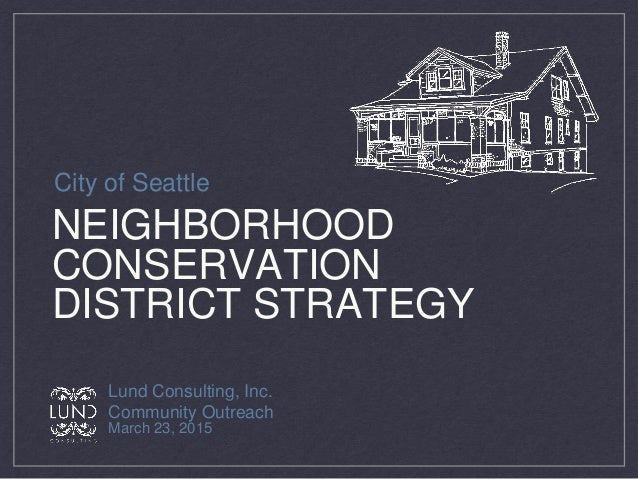
Seattle City Council member Tom Rasmussen recently announced that the city is considering creating "Neighborhood Conservation Districts" with the following objectives:
- Meet the goal that city officials hear from growing communities to "protect the character of the neighborhood as growth and development occur.
- Address development pressure in neighborhoods that have a distinctive character.
- Accommodate increased density in a manner that is compatible with the existing development context.
- Conserve and enhance the existing architectural and cultural identity of neighborhoods and commercial districts.
- Foster new construction and in-fill development in harmony with the scale and physical character of existing buildings.
- Provide direction regarding types of buildings and specific features to be protected.
- Provide tailored guidelines and regulations, with an appropriate level of discretion, to respond to the unique development conditions in each neighborhood that qualifies as a conservation district.
One Home Per Lot, a city-wide grassroots group monitoring large homes built on side and backyards of existing homes, included this information in their recent newsletter and also gave an update on the ongoing issue.
One such all, skinny home is located in the at 4800 block of NE 40th Street in Laurelhurst,in Laurelhurst. The home sits on a piece of property 30 feet wide, and was segmented out of a side yard which was a total of only 80 feet wide. The house covers all the land, except for 10 feet of the house's previous yard.
One Home Per Lot update:
Dan Duffus (the city's most prolific developer of small-lot housing) recently
sued the city of Seattle because it tried to stop him from using historical documents to justify the splitting of a single lot. He lost.
Even better, the case sets a precedent (in the words of one of our supporters): "DPD appears to be requiring Duffus to prove that a substandard lot have been established AS A BUILDING SITE prior to 1957…not just that the lot existed, which was their de facto standard."
In yet another effort to improve the image of Seattle's small-lot developers, the lobbying group Smart Growth Seattle has hired a professional writer to write sweet stories about these folks and post them on the Smart Growth Seattle website.
So far, nothing sweet has been written about Dan Duffus. In fact, the entire effort seems to be an attempt to redirect the spotlight away from Mr. Duffus. In the announcement, developer lobbyist Roger Valdez writes, "Whenever I am talking with people who are wary of new growth or who have genuine concerns about development, I will often point out that, 'there is no Monopoly Man with a top hat and cane running away with bags of gold!' It always brings a smile or a laugh. The truth is that many, many good and smart people in Seattle think there really is a Rich Uncle Pennybags behind new growth."
If you would like to judge for yourself about whether there really is an "Uncle Pennybags," see this recent quarterly earnings report from just one of Mr. Duffus' companies.
Roger Valdez (the colorful lobbyist for Seattle's small-lot developers; and the little man behind the curtain of Smart Growth Seattle) recently spoke on a panel in San Francisco discussing that city's "housing crisis." In his remarks, he speaks bluntly about the housing situation in Seattle and shares his criticism of the members of the city council, the Department of Planning and Development, and the city's citizens (like any good developer lobbyist, he throws shade on everyone but himself and his developer cronies).
The Seattle city council Planning, Land Use and Sustainability committee still has not revisited the building codes regarding public notice for small-lot development, as promised.
Currently, public notice (a yellow sign in the front yard, and a letter to the surrounding neighbors) is only required for small-lot projects on the smallest of lots (those 3,200 square feet and smaller). And no public notice is required prior to a lot boundary adjustment (another sneaky way these developers create buildable undersized lots).
For more information about Neighborhood Conservation Districts go here.

No comments:
Post a Comment